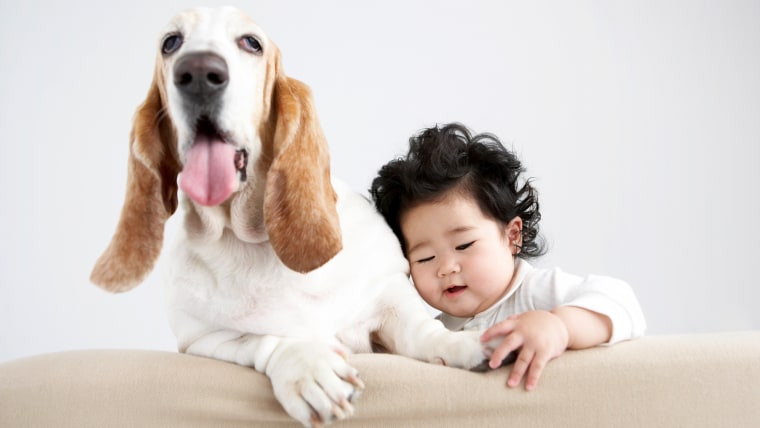We cuddle them, celebrate their birthdays, feed and clothe them — and even leave them in our wills. Oh, and we care about our children too.
A new study, using fMRI imaging, scanned the brains of mothers who looked at images of their dogs and their own children. They found the same areas of the brain, including reward centers, were activated with both.
It's too early to tell exactly what that means, Lori Palley, director of veterinary medicine at the Massachusetts General Hospital Center for Comparative Medicine, told TODAY. But it could eventually help us understand why studies have shown that some people do a lot better with pets in their lives.
"We know that a pet is good for your psychological, physical and emotional well-being," Nicholas Dodman, director of animal behavior at Tufts University Cummings School of Veterinary Medicine, told TODAY. "There are numerous studies that show that you live longer, that your mean blood pressure is lower and that there is an increase in oxytocin when you pet your dog."
Most studies, Palley said, exposed people to dogs and looked at how it affected their stress or fitness levels.
"What I wanted to do was get to the bottom of it and understand what was going on neurologically," she said.
The results of the study do not mean mothers love Fido as much as their burbling babies. Palley described the small study — it involved only 14 mothers who had at least one child ages 2 to 10 who were also dog owners — as a "first step" towards understanding our connections with our pets.

She wants to replicate the study with more people and look at how men and women without children reacted to photos of babies and pets as well.
In the end, the most interesting part of the study to Palley was how people's brains reacted differently to the images. One region of the brain associated with bond formation was only activated by the photo of the child. Another, called the fusiform gyrus, associated with facial recognition, was more active when a picture of a pooch came up.
What the study ultimately means about humans and their pets is unknown. But more studies could shed light on the topic, including MRI scans of dogs' brains, something that Dodman and his colleagues have done before.
Dodman, like Palley, is certain of one thing: people really, really love their pets.
"I witness this incredibly strong bond between dogs and cats and their owners all of the time," he said. "I experience it myself. I went away to Florida to visit my daughter and grandson and I had separation anxiety from my dog Rusty."
